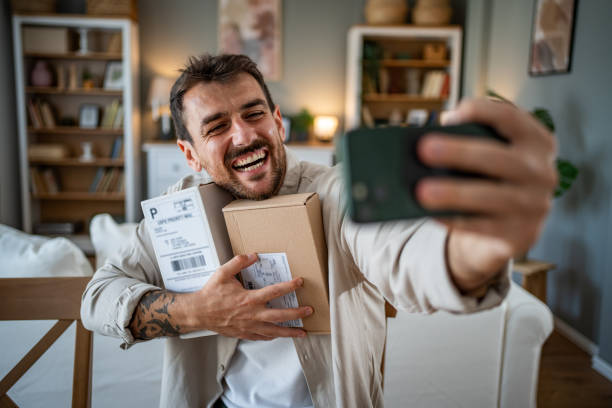We’ve all been there. You walk into a store for one item and walk out with a bag full of things you didn’t plan to buy. Or you’re scrolling online, and before you know it, your cart is overflowing with items you “just had to have.” Sound familiar? Welcome to the world of impulse buying—a common habit that can wreak havoc on your budget and leave you wondering, “Why did I even buy this?”
Impulse buying isn’t just about poor self-control; it’s a complex behavior driven by emotions, marketing tactics, and psychological triggers. The good news? With the right strategies, you can break free from this cycle and take control of your spending. In this blog, we’ll explore what drives impulse buying, why it happens, and share practical tips to help you curb impulsive purchases for good.
What Is Impulse Buying?
Impulse buying refers to making unplanned purchases without fully considering the consequences. These decisions are often driven by emotions like excitement, stress, or boredom, rather than logical reasoning.
While the occasional splurge isn’t a big deal, frequent impulse buying can lead to financial stress, clutter, and regret. The first step to overcoming this habit is understanding why it happens in the first place.
Why Do We Impulse Buy?
1. Emotional Triggers
Emotions play a huge role in impulse buying. Whether you’re feeling stressed, sad, or even overly excited, these emotions can cloud your judgment and lead to impulsive decisions.
For a deeper dive into how emotions influence spending, check out our blog on How Emotions Influence Financial Decisions.
2. Marketing Tactics
Retailers are experts at creating a sense of urgency and scarcity. Limited-time offers, flash sales, and “buy one, get one free” deals are designed to push you into making quick decisions.
3. Convenience
With online shopping and one-click purchases, buying has never been easier. This convenience makes it tempting to act on impulse without thinking things through.
4. Social Influence
Seeing friends or influencers showcase new products can trigger FOMO (fear of missing out), pushing you to buy things you don’t really need.
5. Lack of Planning
When you don’t have a clear budget or shopping list, you’re more likely to make impulsive purchases.
The Cost of Impulse Buying
While impulse buying might feel satisfying in the moment, it often comes with long-term consequences:
- Financial Strain: Unplanned purchases can derail your budget and leave you struggling to cover essential expenses.
- Clutter: Buying things you don’t need can lead to a cluttered home and wasted resources.
- Regret: Many impulse buys end up unused or unwanted, leading to feelings of guilt and frustration.
Strategies to Curb Impulse Buying
Ready to break the cycle? Here are some actionable strategies to help you resist the urge to impulse buy:
1. Create a Shopping List (and Stick to It)
Before heading to the store or browsing online, make a list of what you need. This simple habit can help you stay focused and avoid unnecessary purchases.
2. Set a Budget
Having a clear budget for discretionary spending can help you think twice before making an unplanned purchase.
3. Use the 24-Hour Rule
When you feel the urge to buy something, wait 24 hours before making the purchase. Often, the initial excitement will fade, and you’ll realize you don’t really need the item.
4. Avoid Temptation
Unsubscribe from promotional emails, avoid browsing online stores for fun, and steer clear of sections in stores that tempt you to splurge.
5. Practice Mindful Spending
Before making a purchase, ask yourself:
- Do I really need this?
- Will I use this regularly?
- Can I afford this without sacrificing my financial goals?
If the answer to any of these questions is no, it’s probably best to walk away.
6. Track Your Spending
Keeping a record of your purchases can help you identify patterns and recognize when you’re most likely to impulse buy.
7. Set Financial Goals
Having clear goals—like saving for a vacation or paying off debt—can motivate you to think twice before making unnecessary purchases.
Real-Life Examples of Curbing Impulse Buying
Let’s look at some practical examples of how these strategies can be applied:
1. Grocery Shopping
- Impulse Buy: Grabbing a bag of chips or a fancy dessert just because it looks appealing.
- Strategy: Stick to your shopping list and avoid browsing the snack aisle.
2. Online Shopping
- Impulse Buy: Adding items to your cart because of a flash sale or free shipping offer.
- Strategy: Use the 24-hour rule and avoid saving your payment information for faster checkout.
3. Clothing Stores
- Impulse Buy: Buying a trendy outfit you’ll only wear once.
- Strategy: Set a monthly clothing budget and prioritize versatile, timeless pieces.
The Role of Mindfulness in Curbing Impulse Buying
Mindfulness—the practice of being present and aware—can be a powerful tool for overcoming impulse buying. By tuning into your thoughts and feelings, you can recognize the emotional triggers that lead to impulsive purchases and make more intentional decisions.
For example, instead of mindlessly swiping your credit card, take a moment to reflect:
- How will this purchase make me feel in the short term?
- How will it impact my financial well-being in the long term?
This simple shift in perspective can help you align your spending with your values and goals.
Final Thoughts: Take Control of Your Spending
Impulse buying is a common habit, but it doesn’t have to control your life. By understanding the triggers and implementing practical strategies, you can break free from the cycle of impulsive purchases and take control of your financial future.
Remember, it’s not about depriving yourself—it’s about making intentional choices that bring you closer to your goals. So, the next time you feel the urge to impulse buy, pause, reflect, and ask yourself: Is this purchase worth it?
Ready to dive deeper into mindful living and personal growth? Explore more resources at Venzec.icu.









